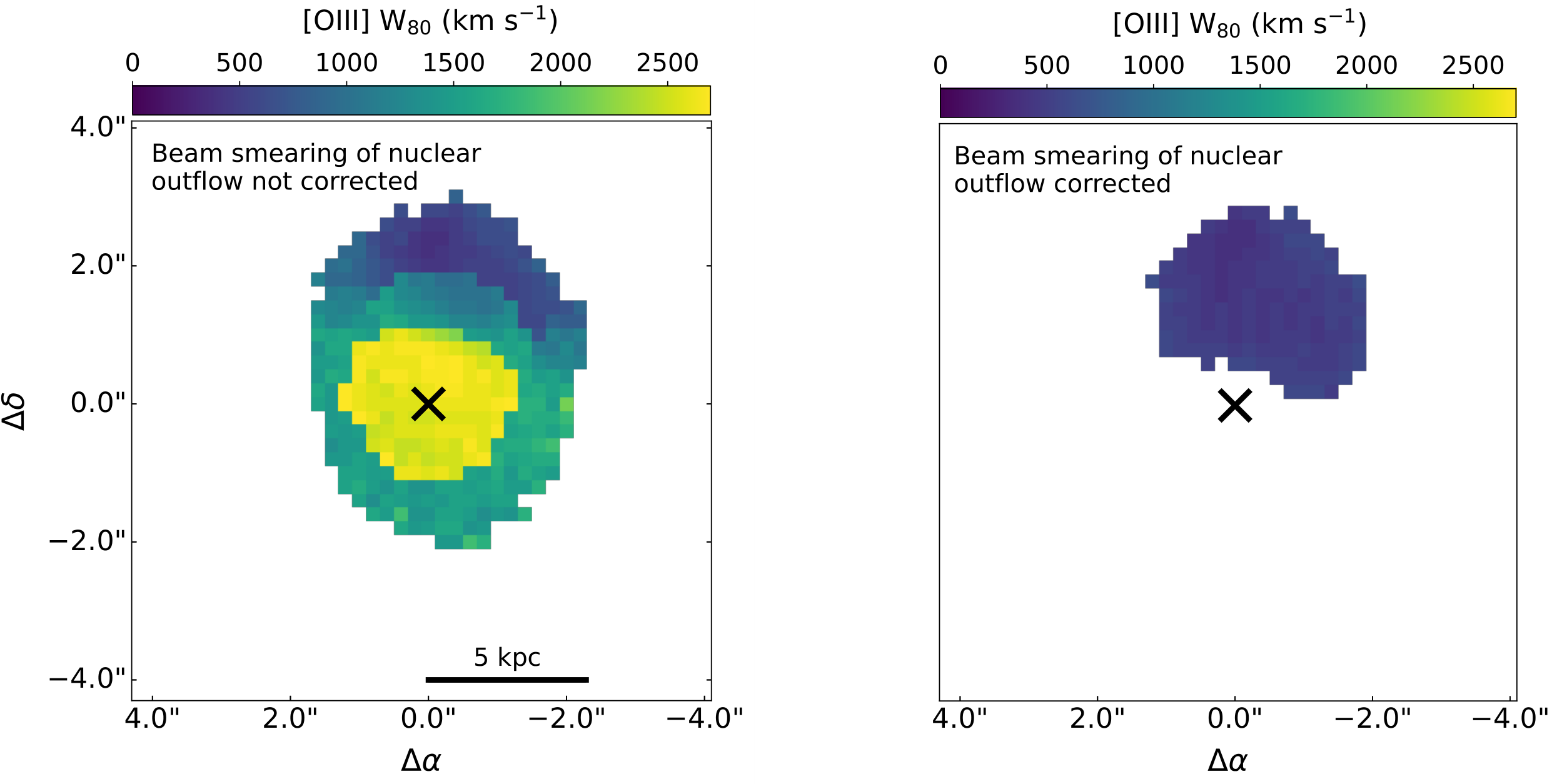SCIENCE BLOG - Paper: No evidence for fast, galaxy-wide ionised outflows in a nearby quasar - the importance of accounting for beam smearing
Luke Holden - 2nd Dec 2024
The final paper of my PhD has now been accepted for publication in MNRAS! This first appeared as the final science chapter of my thesis, and now forms my fourth first-author paper.
In this work, we analyse VLT/MUSE integral-field spectroscopy of the type-2 quasar / ultraluminous infrared galaxy F13451+1232 (also known as 4C12.50) - the object that I analysed ALMA sub-mm data of in my previous paper. After correcting for the beam smearing of the known bright nuclear outflows by atmospheric seeing, we find no evidence for large-scale (r>5 kpc) AGN-driven outflows, despite the object representing the situation considered in theoretical models that predict galaxy-wide outflows. This indicates that the outflows in this object are limited to the central r~100 pc, further supporting the scenario in which outflows in active galaxies can be compact. We also demonstrated that the failure to account for the beam-smearing effects of atmospheric seeing would have led to overestimations of outflow radii and kinetic powers by orders of magnitude, and argue that evidence for large-scale outflows presented by previous studies were the result of atmospheric seeing in many cases.
